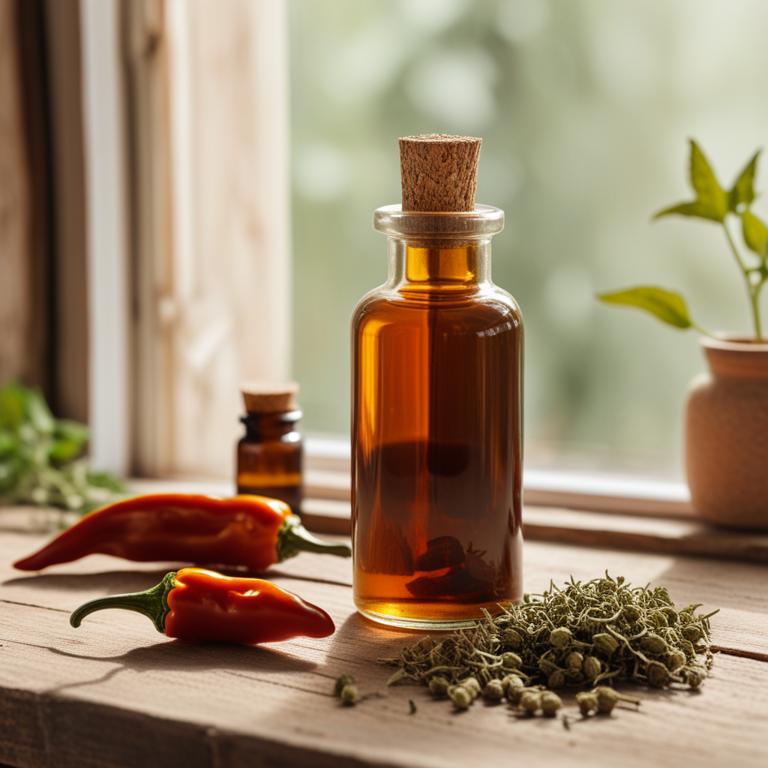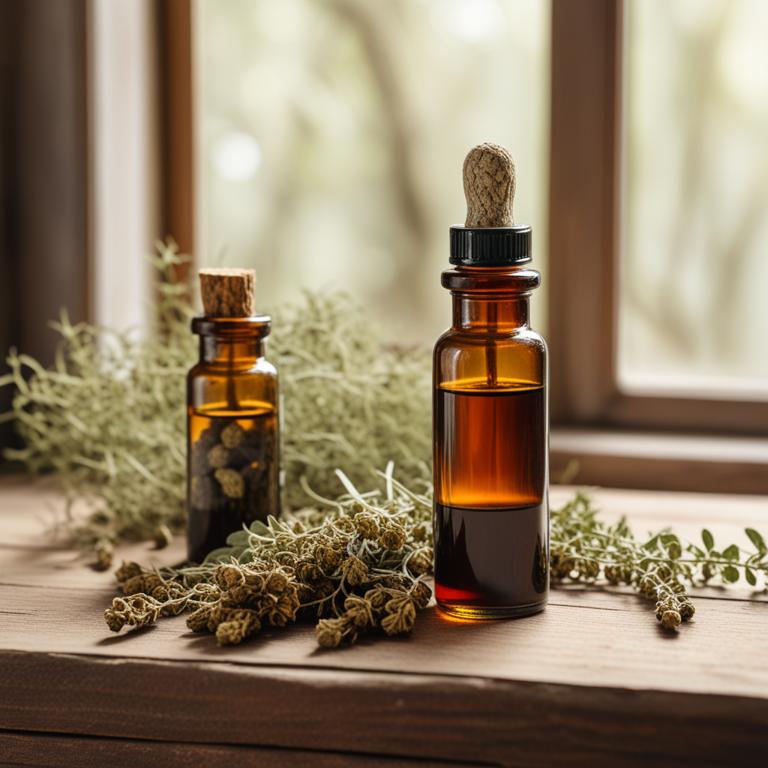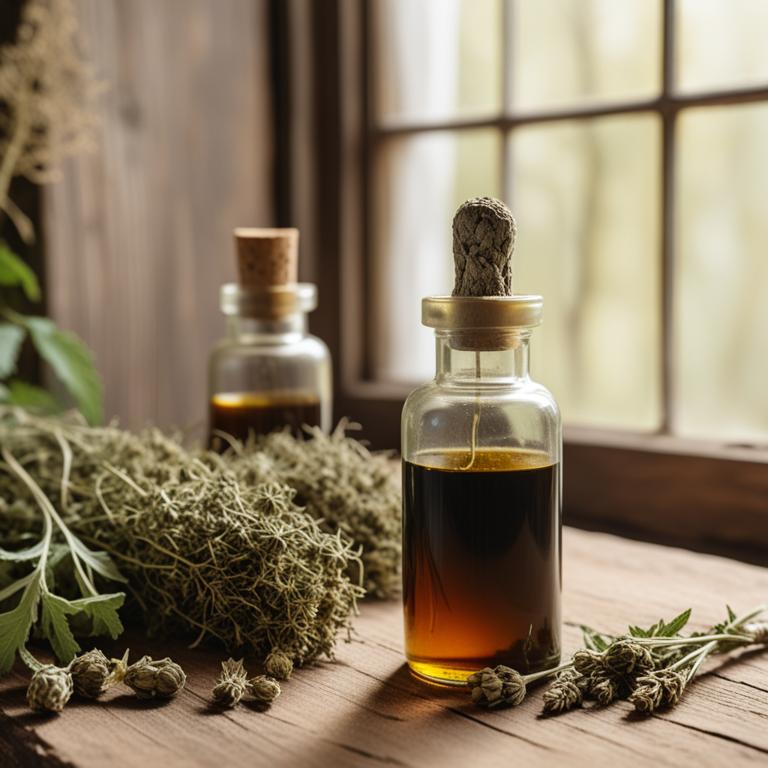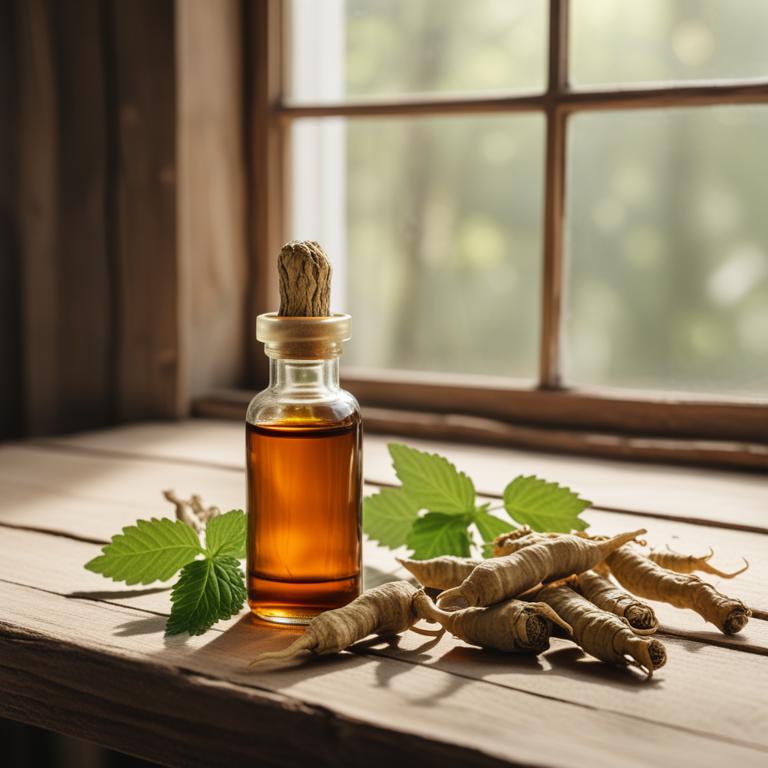9 Best Herbal Tinctures For Numbness In Hands

Herbal tinctures for numbness in hands are liquid extracts of various plants, herbs, and spices used to treat numbness, tingling, and weakness in the hands.
The benefits of using herbal tinctures for this ailment include their ability to improve circulation, reduce inflammation, and provide antioxidant properties, which can help alleviate numbness and promote overall hand health.
Examples of herbal tinctures that can be used to treat numbness in hands include Ginkgo biloba, which improves blood flow and reduces oxidative stress; Ashwagandha, which reduces inflammation and promotes nerve regeneration; Capsaicin, which increases circulation and reduces pain; Ginger, which reduces inflammation and improves circulation; and Turmeric, which reduces inflammation and promotes antioxidant activity.
By incorporating these herbal tinctures into their treatment plan, individuals may experience relief from numbness in their hands and improve their overall hand function.
According to the study, tinctures for numbness in hands, specifically those derived from herbal medicines, may be effective in increasing sensory and motor nerve conduction velocity in individuals with diabetic peripheral neuropathy, which could potentially alleviate numbness in hands.
Below there's a list of the 9 best herbal tinctures for numbness in hands.
- 1. Zingiber officinale tinctures
- 2. Zanthoxylum bungeanum tinctures
- 3. Curcuma longa tinctures
- 4. Capsicum annuum tinctures
- 5. Ginkgo biloba tinctures
- 6. Piper nigrum tinctures
- 7. Cinnamomum verum tinctures
- 8. Acorus calamus tinctures
- 9. Panax ginseng tinctures
Also you may be interested in...
TODAY'S FREE BOUNDLE
Herb Drying Checklist + Herbal Tea Shopping List + Medicinal Herbs Flashcards
Enter you best email address below to receive this bundle (3 product valued $19.95) for FREE + exclusive access to The Aphotecary Letter.
$19.95 -> $0.00
1. Zingiber officinale tinctures

Zingiber officinale tinctures, derived from the rhizome of the ginger plant, have been traditionally used to treat numbness in hands due to their anti-inflammatory and analgesic properties.
The bioactive constituents, including gingerols and shogaols, help to reduce swelling and relieve pain associated with this condition.
By reducing inflammation and alleviating pain, Zingiber officinale tinctures can help to restore sensation and mobility to the affected hands.
Regular use of this herbal preparation has been reported to provide relief from numbness and tingling sensations, improving overall hand function and quality of life.
2. Zanthoxylum bungeanum tinctures

Zanthoxylum bungeanum tinctures have been traditionally used to treat numbness in hands, a condition often referred to as "tingling" or "pins and needles.".
The antispasmodic and vasodilatory properties of this herbal preparation help to relieve numbness by reducing muscle spasms and improving blood circulation to the affected area.
The bioactive constituents, including ferulic acid and coumarins, possess anti-inflammatory and antioxidant properties, which contribute to the relief of numbness by reducing inflammation and oxidative stress.
Regular use of Zanthoxylum bungeanum tinctures has been reported to provide benefits in treating numbness in hands, including rapid relief from symptoms and improved overall hand function.
3. Curcuma longa tinctures

Curcuma longa tinctures have been traditionally used to treat numbness in hands, also known as paresthesia, due to their anti-inflammatory and antioxidant properties.
The bioactive constituents of Curcuma longa, including curcumin, demethoxycurcumin, and bisdemethoxycurcumin, help to reduce inflammation and oxidative stress in the affected nerves, thereby alleviating numbness and tingling sensations.
The tincture's ability to modulate the expression of inflammatory genes and enzymes also contributes to its therapeutic effects, making it a potential natural remedy for this condition.
Regular use of Curcuma longa tinctures may help to provide relief from numbness in hands, improve nerve function, and promote overall well-being.
Related Study
According to "Reviews in the neurosciences", Curcuma longa tinctures for numbness in hands, while there is only one clinical trial available, may have potential benefits in improving nerve function and quality of life, however, further studies are necessary to confirm their safety and efficacy as a complementary or alternative treatment.
4. Capsicum annuum tinctures

Capsicum annuum tinctures have been traditionally used to treat numbness in hands, a condition characterized by reduced sensation and mobility in the fingers and hands.
This herbal preparation contains bioactive constituents such as capsaicin, which helps to increase blood flow to the affected area, reduce inflammation, and stimulate nerve regeneration, thereby alleviating numbness and restoring sensation.
The capsaicin in Capsicum annuum tinctures also has analgesic and anti-inflammatory properties, which contribute to its therapeutic effectiveness in treating numbness in hands.
Regular use of Capsicum annuum tinctures has been found to provide relief from numbness and improve hand function, making it a valuable natural remedy for individuals experiencing this condition.
5. Ginkgo biloba tinctures

Ginkgo biloba tinctures have been traditionally used to treat numbness in hands, a condition often associated with poor blood circulation and neuropathy.
The herbal preparation's properties, including its vasodilatory and anti-inflammatory effects, help to improve blood flow to the hands, thereby alleviating numbness and tingling sensations.
The bioactive constituents of Ginkgo biloba, such as flavonoids, terpenoids, and bilobalide, play a crucial role in enhancing blood circulation and reducing oxidative stress, which in turn helps to treat numbness in hands.
Regular use of Ginkgo biloba tinctures has been found to provide relief from numbness in hands, promote overall circulatory health, and support the well-being of individuals suffering from this condition.
6. Piper nigrum tinctures

Piper nigrum tinctures have been traditionally used to treat numbness in hands, a condition characterized by a lack of sensation or feeling in the extremities.
The bioactive constituents of piper nigrum, including piperine, ferulic acid, and beta-caryophyllene, have been shown to possess anti-inflammatory, antioxidant, and vasodilatory properties that help to improve blood circulation and reduce numbness.
By promoting the release of neurotransmitters such as acetylcholine and dopamine, piper nigrum tinctures can help to restore sensation and alleviate numbness in the hands.
The benefits of using piper nigrum tinctures for this ailment include improved circulation, reduced inflammation, and enhanced nerve function, making it a potentially effective natural remedy for treating numbness in hands.
7. Cinnamomum verum tinctures

Cinnamomum verum tinctures, derived from the bark of the Ceylon cinnamon tree, have been used in traditional medicine to treat numbness in hands, a common symptom of peripheral neuropathy.
The tincture's anti-inflammatory and antioxidant properties help to alleviate nerve damage and promote healing.
The bioactive constituents, including cinnamaldehyde, eugenol, and linalool, contribute to its therapeutic effects by reducing oxidative stress and modulating neurotransmitter activity.
Regular use of Cinnamomum verum tinctures may help to restore sensation and mobility to the affected hands, offering relief from numbness and associated discomfort.
8. Acorus calamus tinctures

Acorus calamus tinctures have been used to treat numbness in hands, a condition characterized by a lack of sensation or feeling in the hands.
The antispasmodic and anti-inflammatory properties of this herbal preparation help to relax muscles, reduce pain and swelling, and improve blood circulation to the affected area.
The bioactive constituents, including volatile oils, alkaloids, and saponins, work synergistically to reduce nerve sensitivity, promote nerve regeneration, and enhance the nervous system's ability to transmit signals.
By using Acorus calamus tinctures, individuals can experience relief from numbness in hands, improved sensation, and enhanced motor function.
Related Study
According to "Daru : journal of Faculty of Pharmacy, Tehran University of Medical Sciences", Acorus calamus tinctures have shown beneficial effects in preventing axonal degeneration and improving antioxidant defense mechanisms in animal models of chemotherapy-induced peripheral neuropathy, which may also be beneficial for numbness in hands.
9. Panax ginseng tinctures

Panax ginseng tinctures have been traditionally used to treat numbness in hands, a condition often associated with peripheral neuropathy.
The bioactive constituents of Panax ginseng, such as ginsenosides, ginsenolic acid, and ginsenoside Rg3, play a crucial role in enhancing blood flow and reducing inflammation in the affected areas, thereby alleviating numbness and pain.
The tinctures of this herbal preparation are believed to help treat numbness in hands by stimulating nerve regeneration, improving microcirculation, and modulating the immune system's response to damage.
The benefits of using Panax ginseng tinctures for this condition include reduced symptoms, improved quality of life, and potential prevention of further nerve damage.